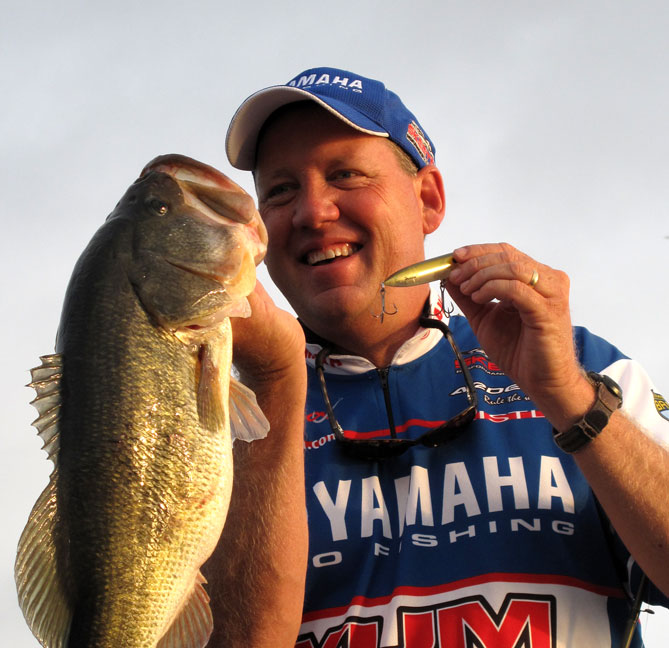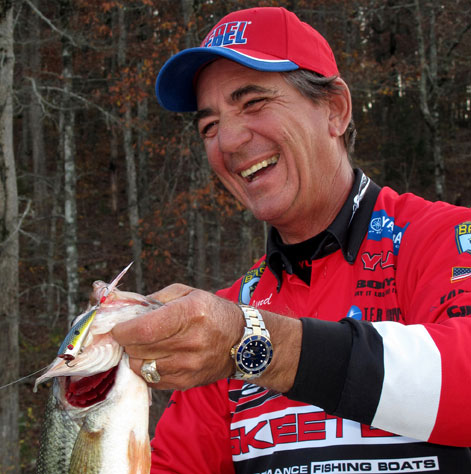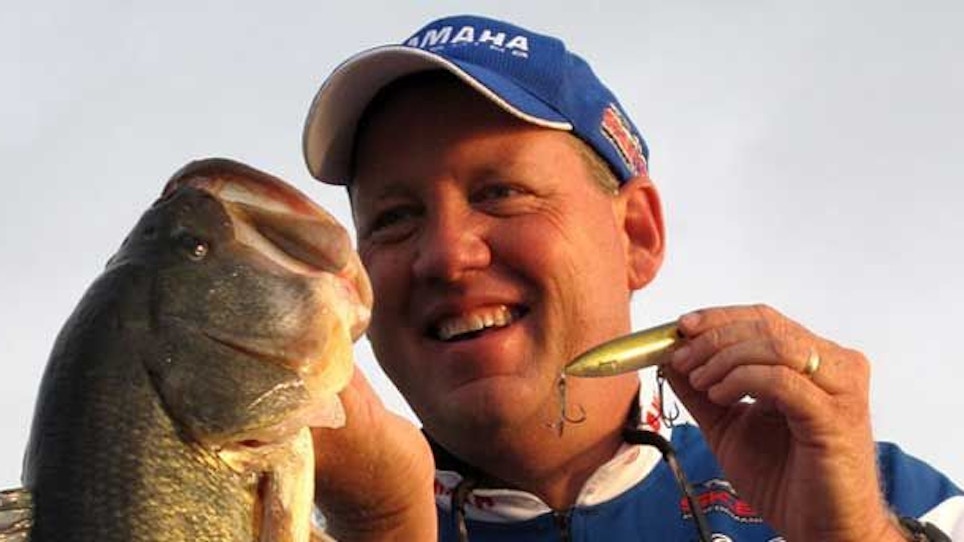The 2013 Forrest Wood Cup blasts off Aug. 15 on the Red River out of Shreveport, La. While the Red River is a popular bass tournament destination, most of those events are held in early spring when temperatures range from the 30s to 60s instead of 90s and 100s. Does this mean the anglers will be throwing different lures and fishing different areas than during those late-winter/springtime tournaments?
We asked three professional anglers from Texas who have a lot of experience on the Red River what they thought about the winning tactics and the challenges the FLW competitors will face. Here’s what B.A.S.S. anglers Alton Jones and Matt Reed, and B.A.S.S./FLW angler Zell Rowland (who will be fishing the Cup) had to say about winning on the Red in the summertime.
BACKWATER BAITS

In previous tournaments, backwaters always came into play as perfect areas for flipping jigs, pitching Dingers or creature baits and casting spinnerbaits, however, in spring, water quality is good and bass are positioning in those backwaters for the spawn.
During the doldrums of summer, though, water quality and temperatures can be questionable in some backwater spots. According to the pros, the presence of some current in those backwaters will be one of the keys to victory.
“If we don’t have rain north of the river to get it to rise before the Cup we won’t have much current, and that will take a chunk of the river out of play simply because water levels will prohibit access or the water will be stagnant,” said Rowland.
Rowland visited the river in July with the heat index at 105 degrees and river running slow. He found that he couldn’t get into some of the backwaters he’s fished in the past because of silting with mud and sand. Water levels and the always-changing topography of the river make it difficult to fish on history.
In the backwaters available to FLW Cup anglers, Rowland said the presence of vegetation also plays a big part in success. Aquatic vegetation improves the water quality and holds better bass than those sloughs and pockets that only have wood cover.
“The Booyah Pad Crasher and Poppin’ Pad Crasher will be good for those areas with vegetation,” he said. “For flipping, I’ll be throwing a YUM Wooly Bug or Mighty Craw.”
Reed agrees with Rowland on his choice of flippin’ baits and said that smaller plastics are best. He said that lure color is as important as bait style on the Red in summer.
“Shad and smaller bluegills are the main forage during summer,” said Reed. “The fish don’t seem to have much to do with crawfish this time of year. Chartreuse patterns have always done best.”
MAIN RIVER CRANKS
 B.A.S.S. Elite pro Alton Jones has plenty experience on the Red River, including two Bassmaster Classics, but never in August. He says it’s the presence of current on the main river that makes it more productive.
B.A.S.S. Elite pro Alton Jones has plenty experience on the Red River, including two Bassmaster Classics, but never in August. He says it’s the presence of current on the main river that makes it more productive.
“The tournament could be won in either a backwater or on the main river,” he said. “The main channel is 20 to 30 feet deep in some places and dredged for barge traffic, but in the backwaters, 8-feet is as deep and you’ll find. Either way, it will be won shallow – less than 5-feet of water.”
On the main river, Jones says that the XCalibur Xcs100 or Bomber 2A are top picks. If an angler wins the Cup on the main river, Jones says that running those crankbaits along a milk run of wing dams will likely be the pattern. Reed likes to work Red River wing dams with cranks that run a little deeper, something like the Bomber 4A or a Fat Free Shad BD5F, which dives to about 9 feet compared to Jones’ Xcs100 that dives to just 3 feet.
The FLW anglers can fish three pools of the Red River, but running to the third pool will leave about 3 hours of fishing time. All of these pools feature main-river wing dams, wood cover and rocks, and if the water level or stagnancy eliminates many of the backwaters, each of these pools will get “small” due to the number of anglers pounding them.
Reed scored a top-10 finish in a tournament on the Red back in the late 1990s by cranking rocks on the main river. He once made a big, slow run to a distant backwater he thought would put him away from the crowd, and the pocket had everything a bass fisherman would want – vegetation, wood and a little current flow.
“It took me a while to get there,” he said, “and when I finally got there I found 15 other boats already in this little area about the as wide as three boats. We destroyed each other.”
 PREDICTIONS
PREDICTIONS
The three Texans agree that bigger bass will come from the backwaters on a hollow body frog or by flippin’ small plastics, but a more-consistent bite will be cranking the main river. If an angler can locate the right backwater without many other anglers horning in on it, he stands a good shot of taking the Cup.
“Those ‘Hidey Holes’ can really pay off for you,” Jones said. “One of my best days on the Red was the final day of the 2009 Bassmaster Classic when I brought in 21 pounds. That was from a secret backwater area that was hard to find and hard to access, and I had it all to myself.
“I also had one of my worst days ever on the Red River when I tried to get into a backwater and couldn’t. I got stuck for two hours on a sand bar.”






